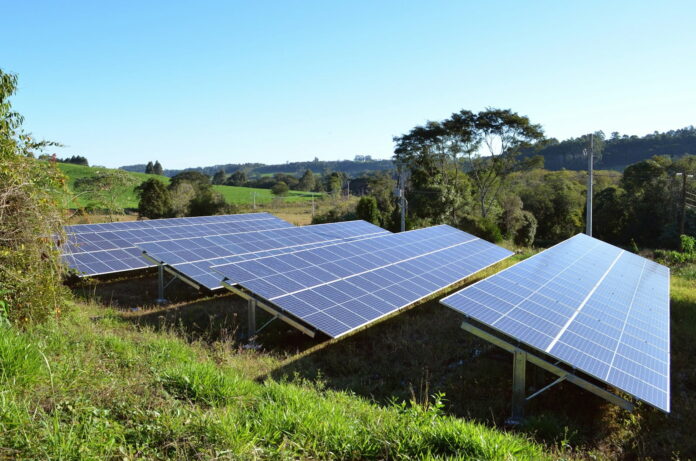Solar pavements represent an innovative intersection between renewable energy and urban infrastructure, offering a promising solution to harnessing clean energy in densely populated areas. As cities across the globe grapple with the challenges of climate change and sustainable development, the integration of solar technologies into the very fabric of urban landscapes has come to the fore.
Exploring Solar Pavement Tech
Solar pavement technology is a cutting-edge approach to energy generation that transforms the ground we walk on into a source of power. At its core, solar pavement systems consist of modular tiles equipped with photovoltaic cells that capture sunlight and convert it into electricity. These tiles are often made of durable materials like tempered glass, which can withstand the weight and wear of pedestrian and sometimes even vehicular traffic. Furthermore, the surfaces are designed to be anti-slip to ensure the safety of users. Some solar pavements also incorporate energy-harvesting technologies that harness kinetic energy from footsteps, adding another layer to their energy-generating capabilities.
In addition to energy production, these solar tiles can include LED lighting for nighttime visibility and can be integrated with smart sensors to collect data on foot traffic and environmental conditions. The modularity of the tiles allows for easy repair and replacement, which is vital for maintaining the system’s efficiency over time. Innovations continue to improve the efficiency of the photovoltaic cells used in these pavements, as well as the durability of the tiles themselves, making them more suitable for a variety of climates and urban settings.
The potential applications of solar pavement technology are vast. From sidewalks to plazas, bike paths to driveways, any surface that receives sunlight could theoretically be transformed into a power-generating installation. As technology advances, the cost of implementing solar pavements is expected to decrease, making it a more feasible option for cities looking to invest in renewable energy sources without sacrificing valuable land area that could be used for other purposes.
Urban Implementation Challenges
The transition from traditional pavement to solar pavement in urban environments is fraught with challenges. First and foremost is the financial investment required for the installation and maintenance of solar pavements. The initial costs are currently higher than conventional paving materials, which can be a significant barrier for many municipalities. Additionally, the urban landscape presents a complex array of infrastructure that must be navigated carefully, including underground utilities and drainage systems that could be disrupted during installation.
Another significant challenge is the integration of solar pavements with existing power grids. It requires sophisticated electrical systems to manage the variable energy output and ensure a stable supply of electricity. Urban areas with tall buildings and numerous shade-producing obstacles also pose a problem for the consistent performance of solar tiles, as they rely heavily on direct sunlight to maximize energy production. The durability and longevity of solar pavements in high-traffic areas remain a concern, as the replacement and repair of damaged tiles can lead to additional costs and disruptions.
Furthermore, the adoption of solar pavement technology necessitates a shift in urban planning and policy-making. City officials and planners must be willing to embrace innovation and work towards regulatory frameworks that support the deployment of solar pavements. Public acceptance is also crucial; therefore, educational campaigns and pilot projects play an essential role in demonstrating the benefits and viability of solar pavements to the community.
Assessing Environmental Impact
The environmental impact of solar pavements is a critical consideration when evaluating their feasibility and potential benefits. On the positive side, the implementation of solar pavements can significantly reduce the carbon footprint of urban areas by providing a renewable source of energy that directly replaces the need for fossil fuel-based power generation. The decentralized nature of solar pavements means that energy is produced where it is needed, which can reduce transmission losses and improve the efficiency of the urban power grid.
In terms of resource usage, the materials and manufacturing processes for solar tiles are an important factor. The production of photovoltaic cells and the construction of durable, transparent top layers often require rare or energy-intensive materials. However, advancements in recycling technology and sustainable material sourcing are continuously improving the environmental profile of these components. Additionally, by occupying space that is already used for pavements, solar tiles do not contribute to land use changes, which is a significant environmental benefit.
However, there are environmental trade-offs to consider. The manufacturing, transportation, and installation of solar pavements have associated emissions and environmental costs. The lifespan and recyclability of the tiles will also play a significant role in their overall environmental impact. It’s essential that the energy and resources saved by the operation of solar pavements over their lifetime outweigh the inputs required for their production and maintenance to ensure a net positive environmental effect.
The rise of solar pavements presents an exciting opportunity for cities to harness clean energy from an underutilized resource – the ground beneath our feet. While the technology shows great promise in contributing to urban sustainability goals, there remain significant challenges to its widespread implementation. Financial, infrastructural, and regulatory hurdles must be overcome, and the environmental benefits must be carefully weighed against the costs. As urban centers continue to grow and seek innovative solutions to energy and environmental challenges, solar pavements could shine a light on the path forward. With continued research, development, and community engagement, the integration of solar pavements into our cities can help pave the way to a more sustainable and resilient future.
